Call Center Metrics That Drive Customer Satisfaction
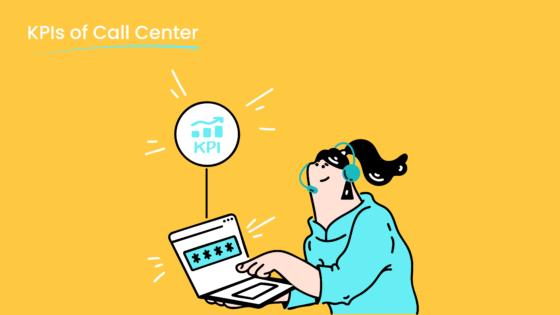
Call center metrics serve as the backbone for understanding and improving customer satisfaction. Metrics like First Call Resolution (FCR) and Net Promoter Score (NPS) reveal how effectively support teams address customer needs. For instance, higher FCR rates correlate with seamless resolutions, while a low Average Speed of Answer (ASA) aligns with faster service delivery. These insights ensure your team meets customer expectations consistently.
Sobot's Voice/Call Center solutions empower businesses to excel in these areas. By leveraging AI-powered voicebots and real-time analytics, companies can reduce average wait times by 20% and enhance query resolution rates by 20%. This technology optimizes call center performance metrics, ensuring efficient workflows and delighted customers.
Understanding Customer Satisfaction in Call Centers
Defining Customer Satisfaction in the Call Center Context
Customer satisfaction refers to how well your call center meets or exceeds customer expectations during interactions. It reflects the quality of service provided and the overall experience customers have when seeking support. Metrics like Customer Satisfaction Score (CSAT) and Net Promoter Score (NPS) help measure this. For example, CSAT surveys ask customers to rate their experience after a call, while NPS gauges their likelihood of recommending your business. These metrics provide a clear picture of how satisfied your customers feel.

In call centers, satisfaction often depends on factors like quick resolutions, friendly agents, and minimal effort required from customers. When you focus on these areas, you create a positive impression that builds trust and loyalty. Tools like Sobot's Voice/Call Center solutions can help you track these metrics in real time, ensuring you stay aligned with customer expectations.
Why Customer Satisfaction is a Key Call Center KPI
Customer satisfaction is one of the most important key performance indicators (KPIs) for call centers. It directly impacts your business's reputation, customer retention, and revenue. Studies show that 91% of dissatisfied customers leave without complaining, making it crucial to prioritize satisfaction. Metrics like First Contact Resolution (FCR) and Customer Effort Score (CES) highlight areas where your team can improve. High FCR rates indicate that your agents resolve issues quickly, while low CES scores show that customers find it easy to get help.
Satisfied customers are more likely to stay loyal and recommend your services. This makes customer satisfaction not just a KPI but a cornerstone of your call center's success. By using advanced tools like Sobot's AI-powered voicebots, you can enhance FCR rates and reduce customer effort, leading to better satisfaction scores.
The Role of Call Center Metrics in Enhancing Customer Experience
Call center metrics play a vital role in improving the customer experience. They provide actionable insights into your team's performance and highlight areas for improvement. For instance, tracking metrics like Service Level and Abandon Rate helps you identify bottlenecks in your operations. A high Service Level ensures that customers receive timely responses, while a low Abandon Rate indicates fewer dropped calls.
| Metric | Description | Relevance to Customer Satisfaction and Operational Effectiveness |
|---|---|---|
| Customer Satisfaction Score (CSAT) | Measures customer perception through post-interaction surveys. | Directly reflects customer satisfaction and service quality. |
| Net Promoter Score (NPS) | Indicates customer loyalty and growth potential through a single-question survey. | Assesses overall customer experience and potential for referrals. |
| Service Level | Monitors call accessibility and response times. | Essential for ensuring timely service delivery, impacting customer satisfaction. |
| Abandon Rate | Tracks call drop-offs to identify staffing issues. | High rates can indicate customer frustration and dissatisfaction. |
| First Call Resolution (FCR) | Measures the percentage of issues resolved on the first contact. | High FCR correlates with increased customer satisfaction and reduced operational costs. |
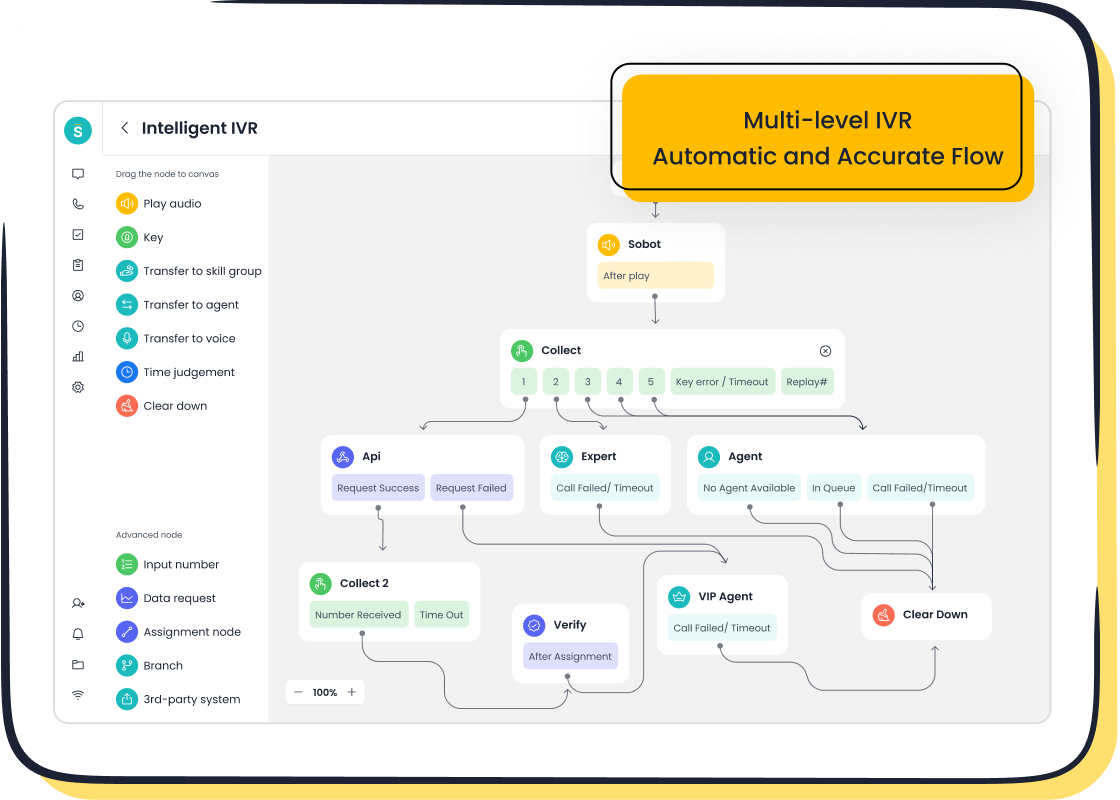
By leveraging these metrics, you can create a seamless and efficient customer journey. Sobot's real-time monitoring and analytics tools make it easier to track and optimize these metrics, ensuring a consistently high level of service.
Key Call Center Metrics That Impact Customer Satisfaction

First-Contact Resolution (FCR) and Its Importance
First-Contact Resolution (FCR) measures how often your team resolves customer issues during the first interaction. It is one of the most critical call center metrics because it directly impacts customer satisfaction and operational efficiency. Customers value quick and effective solutions. Studies show that satisfaction rates reach approximately 90% when issues are resolved on the first contact, compared to just 55% for three or more interactions. Additionally, a 1% increase in FCR correlates with a 1% rise in customer satisfaction.
| FCR Level | Satisfaction Rate |
|---|---|
| First Contact | ~90% |
| Three or More Contacts | ~55% |
| No Resolution | ~35% |

High FCR rates also reduce operational costs by minimizing repeat calls and improving agent productivity. Sobot's Voice/Call Center solutions enhance FCR by equipping agents with a unified workspace that consolidates customer data. This allows agents to address issues more effectively without asking repetitive questions. Intelligent IVR and AI-powered voicebots further streamline workflows, ensuring faster resolutions and happier customers.
Net Promoter Score (NPS) as a Measure of Loyalty
Net Promoter Score (NPS) evaluates customer loyalty by asking a simple question: "How likely are you to recommend our service to others?" This metric is favored by businesses because it correlates strongly with profitability and customer retention. NPS also provides insights into overall customer satisfaction and user experience. For example, industries like healthcare report an average NPS of 34, while communication and media sectors average 19.
| Industry | Average NPS | Lowest NPS |
|---|---|---|
| Healthcare | 34 | 20 |
| Communication & Media | 19 | -6 |
NPS is easy to collect and analyze, making it a practical tool for tracking customer loyalty. High NPS scores indicate that customers are satisfied and likely to advocate for your brand. Sobot's real-time analytics tools help businesses monitor NPS trends and identify areas for improvement. By integrating customer feedback into your operations, you can foster loyalty and drive long-term growth.
Customer Effort Score (CES) and Reducing Friction
Customer Effort Score (CES) measures how easy it is for customers to resolve their issues. Low-effort interactions lead to higher satisfaction and loyalty. Research shows that 94% of customers who experience low-effort interactions intend to repurchase, while only 4% of those with high-effort interactions do the same. Additionally, 96% of customers with high-effort experiences become disloyal.
| Metric | Finding |
|---|---|
| Low-effort interactions | 94% of customers intend to repurchase |
| High-effort interactions | Only 4% intend to repurchase |
| Finding | Implication |
|---|---|
| Customers prefer quick and convenient solutions | Measuring CES helps reduce friction |
| Frustrating experiences lead to negative reviews | CES surveys help identify issues early |
Reducing customer effort requires efficient processes and tools. Sobot's AI-powered voicebots and intelligent call routing minimize friction by guiding customers to the right solutions quickly. The platform's unified workspace also ensures agents have all the information they need to resolve issues efficiently. By focusing on CES, you can create a seamless customer journey that builds trust and satisfaction.
Customer Satisfaction Score (CSAT) Benchmarks and Standards
Customer Satisfaction Score (CSAT) is one of the most widely used call center metrics to measure how satisfied customers feel after interacting with your team. It provides a direct reflection of the quality of service and the overall customer experience. Unlike metrics that focus on operational efficiency, CSAT captures the emotional response of your customers, making it a critical indicator of engagement and loyalty.
What is CSAT and How is it Measured?
CSAT measures satisfaction with a specific interaction, product, or service. Typically, you collect this data through post-interaction surveys where customers rate their experience on a scale, such as 1 to 5 or 1 to 10. The formula for calculating CSAT is straightforward:
CSAT (%) = (Number of Satisfied Responses / Total Responses) x 100
For example, if 80 out of 100 customers rate their experience as "satisfied" or "very satisfied," your CSAT score would be 80%. This simplicity makes CSAT an accessible and actionable metric for call centers.
Why CSAT Benchmarks Matter
Benchmarks help you understand how your call center performance metrics compare to industry standards. Historically, a CSAT score of 75% was considered acceptable. However, with rising customer expectations, businesses now aim for scores of 85% or higher. Achieving this level demonstrates a strong commitment to delivering exceptional customer experiences.
Best Practices for Measuring CSAT
To get the most value from CSAT, you should follow these best practices:
- Use consistent survey questions to ensure reliable data.
- Focus on specific interactions or transactions to gather targeted insights.
- Combine CSAT with other call center metrics like Net Promoter Score (NPS) and Customer Effort Score (CES) for a comprehensive view of customer satisfaction.
How Sobot Helps You Achieve High CSAT Scores

Sobot's Voice/Call Center solutions make it easier to track and improve CSAT. The platform offers real-time analytics and intelligent tools like AI-powered voicebots to streamline customer interactions. Features such as a unified workspace and smart call routing ensure your agents have the resources they need to resolve issues quickly and effectively. By reducing friction and enhancing first-contact resolution rates, Sobot helps you meet and exceed the 85% CSAT benchmark.
Pro Tip: Regularly review your CSAT data alongside other call center KPIs to identify trends and areas for improvement. This holistic approach ensures you stay ahead of customer expectations.
By prioritizing CSAT and leveraging advanced tools like Sobot's solutions, you can create a customer-centric call center that drives loyalty and long-term success.
Operational Call Center Performance Metrics to Monitor
Average Speed of Answer (ASA) and Its Impact on Satisfaction
Average Speed of Answer (ASA) measures the time it takes for a customer to connect with an agent after entering the queue. This metric plays a critical role in shaping customer satisfaction. Customers expect quick responses, especially in today’s fast-paced environment. A high ASA often leads to frustration, resulting in abandoned calls and a negative perception of your service.
- ASA is calculated by dividing the total waiting time for answered calls by the total number of answered calls.
- Reducing ASA improves customer satisfaction and conversion rates.
- High ASA correlates with increased call abandonment rates, which can damage trust and loyalty.
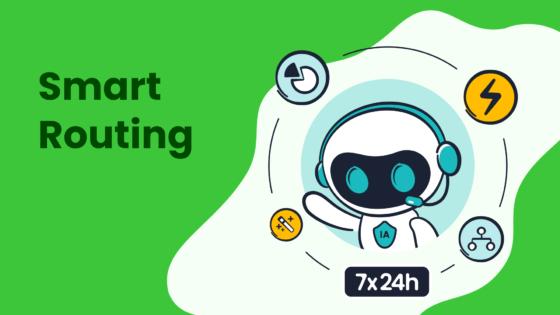
For example, if your ASA is 30 seconds, customers are more likely to stay on the line and feel valued. However, an ASA exceeding 60 seconds might lead to dissatisfaction. Sobot’s Voice/Call Center solutions help you monitor ASA in real time. Features like intelligent IVR and smart call routing ensure customers connect with the right agent quickly, reducing wait times and enhancing their experience.
Pro Tip: Regularly review your ASA data to identify patterns and adjust staffing levels during peak hours. This proactive approach ensures you meet customer expectations consistently.
Average Handle Time (AHT) and Efficiency
Average Handle Time (AHT) measures the average duration of a customer interaction, including talk time, hold time, and after-call work. It serves as a key indicator of your call center’s efficiency. While shorter AHT often reflects operational efficiency, it’s essential to balance speed with quality to maintain customer satisfaction.
| Study/Source | Key Findings |
|---|---|
| VCC Live | Tracking AHT regularly drives continuous improvement initiatives. |
| iPlum | Balancing AHT with quality assurance improves both efficiency and outcomes. |
| Amplifai | Shorter, high-quality interactions enhance satisfaction and resource use. |
| Freshworks | Lower AHT reduces costs while maintaining service quality and quick issue resolution. |
Sobot’s unified workspace empowers agents with all the necessary customer information at their fingertips. This reduces the time spent searching for details, enabling faster resolutions without compromising service quality. Additionally, Sobot’s AI-powered voicebots handle repetitive queries, allowing agents to focus on complex issues, further optimizing AHT.
Note: Use AHT as a guide, not a strict target. Encourage agents to prioritize resolving customer issues thoroughly rather than rushing through interactions.
Call Abandonment Rate and Customer Retention
Call abandonment rate measures the percentage of customers who hang up before speaking to an agent. High abandonment rates indicate potential issues in your call center operations, such as long wait times or insufficient staffing. These issues can lead to customer dissatisfaction and attrition.
- Frustrated customers often abandon calls, resulting in lost business and damaged trust.
- Excessive abandonment rates contribute to a negative customer experience.
- Addressing high abandonment rates requires immediate action to improve satisfaction.
For instance, if your abandonment rate exceeds 5%, it’s a sign that customers are not receiving the timely support they expect. Sobot’s real-time monitoring tools allow you to track abandonment rates and identify problem areas. By leveraging features like bulk outbound tasks and global number availability, you can re-engage customers who abandoned calls, turning potential losses into opportunities.
Actionable Insight: Analyze your call abandonment data alongside other metrics like ASA and Service Level to uncover root causes and implement targeted solutions.
Service Level Agreements (SLAs) and Industry Standards
Service Level Agreements (SLAs) define the performance standards your call center commits to achieving. These agreements act as a promise to your customers, ensuring consistent service quality and accountability. Meeting SLAs is essential for aligning with industry standards and maintaining customer trust.
Why SLAs Matter in Call Centers
SLAs are more than just formal agreements. They set clear expectations for service delivery and help you measure your team's performance against industry benchmarks. Here’s why they’re crucial:
- SLAs outline the services provided, performance standards, and accountability measures, ensuring alignment with industry norms.
- They manage customer expectations by defining service levels, reducing misunderstandings and dissatisfaction.
- SLAs prioritize high-priority tickets, enabling efficient resource allocation and timely resolutions.
For example, an SLA might specify that 90% of calls must be answered within 30 seconds. Achieving this target demonstrates your commitment to fast and reliable service, which directly impacts customer satisfaction.
How SLAs Impact Customer Satisfaction
SLAs influence customer satisfaction by ensuring predictable and high-quality service. When you meet SLA targets, customers feel valued and confident in your ability to address their needs. Conversely, failing to meet SLAs can lead to frustration and lost trust. Studies show that businesses adhering to SLAs experience higher retention rates and fewer complaints.
| SLA Metric | Industry Standard | Impact on Satisfaction |
|---|---|---|
| Average Speed of Answer | 80% within 20-30 seconds | Faster responses reduce frustration. |
| First Call Resolution | 70%-80% | Quick resolutions build loyalty. |
| Call Abandonment Rate | Below 5% | Lower rates indicate better service. |
How Sobot Helps You Meet SLAs
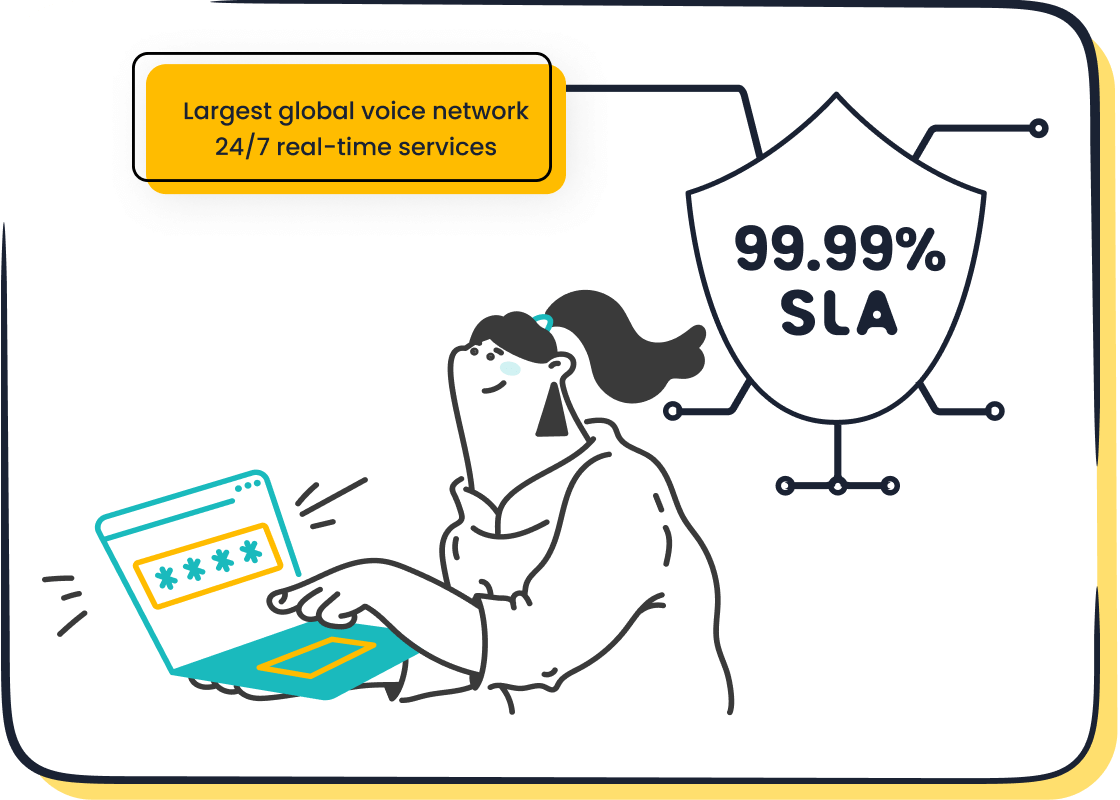
Sobot’s Voice/Call Center solutions simplify SLA management. The platform offers real-time monitoring tools that track key metrics like Average Speed of Answer (ASA) and First Call Resolution (FCR). Intelligent IVR and smart call routing ensure customers connect with the right agent quickly, helping you meet SLA targets consistently. Additionally, Sobot’s unified workspace equips agents with all necessary customer data, enabling faster and more accurate resolutions.
Pro Tip: Use Sobot’s analytics tools to identify trends in SLA performance. Regular reviews help you optimize processes and stay ahead of industry standards.
By prioritizing SLAs and leveraging advanced tools like Sobot’s solutions, you can deliver exceptional service that aligns with industry benchmarks and drives customer satisfaction.
Strategies to Improve Call Center Metrics with Sobot
Leveraging Sobot's Voice/Call Center for Real-Time Monitoring
Real-time monitoring is essential for improving call center metrics. It allows you to track performance as it happens, enabling quick adjustments to meet customer expectations. Sobot's Voice/Call Center solutions provide advanced tools for real-time monitoring. These tools help you analyze key metrics like inbound discussion volume, customer satisfaction, and problem resolution rates.
| Metric | Improvement |
|---|---|
| Inbound discussion volume | Reduced by 20% |
| Positive feedback | Increased to 96%+ |
| Correct answers | Over 80% |
| Customer satisfaction | Over 95% |
| Self-service question resolution | 22.2% of questions answered by customers themselves |
| Customer satisfaction score (CSAT) | 97% |
| Problem resolution rate | 85% |
| Customer happiness | 99% |
Sobot's platform also offers features like intelligent IVR and smart call routing. These features ensure customers connect with the right agent quickly, reducing wait times and improving satisfaction. By leveraging these tools, you can optimize your call center KPIs and deliver exceptional service.
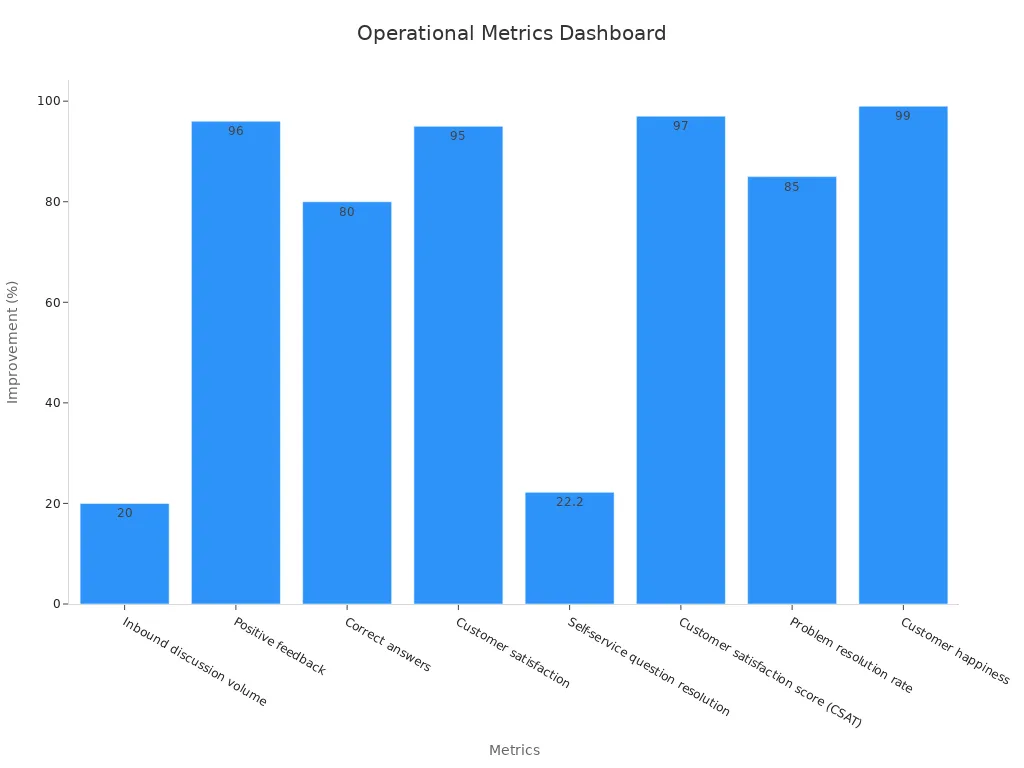
Enhancing Agent Training and Development
Well-trained agents are the backbone of a successful call center. By focusing on agent performance metrics like call handling time and first-call resolution rates, you can identify areas for improvement. Sobot's solutions provide insights into these metrics, helping you tailor training programs effectively.
Agent engagement metrics, such as call quality scores, reveal what motivates your team. When you define clear performance goals and use feedback mechanisms, you create a structured training approach. This improves agent performance and leads to higher customer satisfaction. For example, agents trained to use Sobot's unified workspace resolve issues faster, enhancing both efficiency and customer experience.
Tip: Regularly review agent performance metrics to ensure training programs address current challenges and align with your business goals.
Using AI and Automation for Better Call Center KPIs
AI and automation are transforming the way call centers operate. Sobot's AI-powered voicebots and predictive analytics tools help you improve key metrics like productivity and customer satisfaction. These technologies provide real-time feedback to agents, enabling them to make informed decisions during interactions.
| Metric | Improvement |
|---|---|
| Productivity Improvement | 20% |
| Increase in Active Productive FTEs | 25% |
| Time Saved per Employee | 20 hours/month |
AI-driven KPI tracking allows you to anticipate challenges and optimize resources. For example, Sobot's intelligent call routing ensures customers are directed to the right agent, reducing average handle time. Predictive analytics also help you identify trends, enabling proactive decision-making. By integrating AI and automation, you can enhance your call center's efficiency and deliver a seamless customer experience.
Pro Tip: Use AI tools to analyze interaction data and identify patterns. This helps you refine processes and improve customer satisfaction over time.
Optimizing Processes with Sobot's Unified Workspace
Efficient processes are the backbone of a high-performing call center. Sobot's Unified Workspace simplifies workflows by consolidating all customer interactions and data into a single, easy-to-navigate platform. This feature eliminates the need for agents to switch between multiple systems, saving time and reducing errors.

Imagine a scenario where an agent handles a customer query. Without a unified workspace, they might spend valuable minutes searching for past interactions or relevant details. This delay frustrates customers and lowers satisfaction scores. With Sobot's Unified Workspace, agents access all necessary information—call history, customer preferences, and previous tickets—on one screen. This streamlined approach improves first-contact resolution (FCR) rates and reduces average handle time (AHT).
Did you know? Studies show that 73% of customers expect companies to understand their needs and expectations. A unified workspace helps you meet this demand by providing agents with a complete view of each customer.
Sobot's Unified Workspace also integrates seamlessly with existing CRM systems like Salesforce and Shopify. This compatibility ensures that your team can leverage existing tools while benefiting from Sobot's advanced features. Additionally, the platform supports real-time monitoring, enabling supervisors to track performance metrics such as Average Speed of Answer (ASA) and Call Abandonment Rate. These insights help you identify bottlenecks and optimize processes on the go.
By adopting Sobot's Unified Workspace, you empower your agents to deliver faster, more personalized service. This not only enhances customer satisfaction but also boosts operational efficiency. To learn more about how Sobot can transform your call center, visit Sobot's Voice/Call Center page.
Pro Tip: Regularly review your call center metrics within the Unified Workspace to uncover trends and make data-driven decisions.
Sustaining High Customer Satisfaction Through Metrics

Regularly Reviewing and Analyzing Call Center Metrics
Regularly reviewing call center metrics ensures your team stays aligned with customer expectations. Metrics like Customer Satisfaction Score (CSAT), Net Promoter Score (NPS), and First Call Resolution (FCR) provide valuable insights into performance. For example, CSAT reflects how satisfied customers feel after interactions, while NPS measures loyalty and the likelihood of recommendations. FCR highlights your team's ability to resolve issues on the first contact, a key driver of satisfaction.
| Metric | Description |
|---|---|
| Customer Satisfaction Score (CSAT) | Measures customer satisfaction with call center interactions, indicating overall service quality. |
| Net Promoter Score (NPS) | Assesses customer loyalty and likelihood of recommending the service, reflecting long-term satisfaction. |
| First Call Resolution (FCR) | Indicates efficiency in resolving customer issues on the first contact, contributing to customer happiness. |
By monitoring these metrics, you can identify trends and address potential issues before they escalate. Sobot's analytics tools simplify this process by providing real-time data and actionable insights. These tools help you track performance and make informed decisions to sustain high customer satisfaction.
Tip: Schedule regular reviews of your call center KPIs to ensure continuous improvement and maintain a competitive edge.
Gathering Actionable Customer Feedback
Gathering actionable feedback allows you to refine your service and meet customer needs effectively. Start by defining key metrics like NPS, CSAT, or Customer Effort Score (CES) to quantify feedback. Use an omnichannel approach to collect insights from various platforms, such as email, chat, and social media. This ensures you capture a diverse range of customer opinions.
- Define key metrics: Use NPS, CSAT, or CES to measure feedback.
- Create a Customer Feedback Loop: Gather feedback, act on it, and follow up with customers.
- Choose the Right Feedback Channels: Maximize response rates with an omnichannel strategy.
For example, Hilton uses customer feedback to enhance guest satisfaction and refine services. Similarly, Sobot's omnichannel solutions enable you to gather and analyze feedback seamlessly. By identifying patterns and setting measurable goals, you can implement changes that improve service quality and customer satisfaction.
Pro Tip: Use feedback to spot early warning signs of dissatisfaction and address them proactively.
Continuous Improvement with Sobot's Data Analytics Tools
Continuous improvement relies on leveraging advanced tools to optimize performance. Sobot's data analytics tools offer features like predictive analytics, real-time sentiment analysis, and emotional intelligence. These capabilities help you anticipate customer needs, adapt responses, and deliver empathetic interactions.
| Aspect | Description |
|---|---|
| Predictive Analytics | Anticipates customer behavior, enhancing satisfaction and loyalty through proactive suggestions. |
| Real-time Sentiment Analysis | Gauges customer mood to adapt responses, ensuring empathetic interactions. |
| Emotional Intelligence | Tailors support based on customer emotions, improving service quality and satisfaction. |
| Measurable Outcomes | Companies report faster response times and higher satisfaction ratings using these tools. |
Sobot's analytics dashboard tracks key metrics like AHT, FCR, and CSAT, helping you identify potential issues before they escalate. By using these insights, you can refine processes, improve agent performance, and sustain high customer satisfaction.
Did you know? Companies using Sobot's analytics tools report faster response times and higher satisfaction ratings, showcasing the value of continuous improvement.
Tracking call center metrics is essential for improving customer satisfaction. Metrics like CSAT, NPS, and FCR provide actionable insights into your team's performance. For example, monitoring CSAT monthly helps identify areas where agents excel or need improvement. Regularly analyzing these metrics reduces customer churn and boosts revenue, showcasing the ROI of quality assurance initiatives.
| Metric Category | Specific KPIs | Development Application | Measurement Frequency |
|---|---|---|---|
| Customer Satisfaction | CSAT, NPS, CES | Identify agent strengths and areas for growth. | Monthly/Quarterly |
| Efficiency | AHT, FCR, Call Abandonment Rate | Improve call handling efficiency and effectiveness. | Weekly/Monthly |
| Compliance | Script adherence, compliance scores | Ensure adherence to policies and regulations. | Ongoing/Monthly |
Sobot's Voice/Call Center solutions simplify this process with real-time analytics and AI-powered tools. These features help you optimize workflows, reduce wait times, and enhance first-contact resolution rates. By leveraging Sobot's technology, you can achieve world-class customer satisfaction scores and drive long-term success. Explore Sobot's offerings today to transform your call center performance.
FAQ
What are call center metrics, and why are they important?
Call center metrics measure your team's performance and customer satisfaction. They help you identify areas for improvement and ensure efficient operations. Metrics like First Call Resolution (FCR) and Customer Satisfaction Score (CSAT) directly impact customer loyalty and retention. Sobot's real-time analytics simplify tracking these metrics.
How can Sobot's Voice/Call Center solutions improve customer satisfaction?
Sobot's Voice/Call Center solutions enhance customer satisfaction by reducing wait times and improving issue resolution rates. Features like intelligent IVR, AI-powered voicebots, and a unified workspace streamline workflows. These tools help your team achieve higher First Call Resolution (FCR) and Customer Satisfaction Score (CSAT).
What is the ideal Customer Satisfaction Score (CSAT) for call centers?
An ideal CSAT score for call centers is 85% or higher. This benchmark reflects excellent service quality and customer experience. Sobot's tools, such as real-time analytics and smart call routing, help you consistently meet or exceed this standard.
How does real-time analytics benefit call center operations?
Real-time analytics provide instant insights into key metrics like Average Speed of Answer (ASA) and Call Abandonment Rate. This allows you to make quick adjustments and improve service quality. Sobot's Voice/Call Center solutions offer advanced analytics to optimize your call center's performance.
Can Sobot's solutions integrate with existing systems?
Yes, Sobot's Voice/Call Center solutions integrate seamlessly with CRM systems like Salesforce and Shopify. This ensures your team can access customer data effortlessly, improving efficiency and customer satisfaction. The platform's flexibility makes it suitable for businesses of all sizes.
See Also
Essential Strategies for Effective Call Center Quality Management
Enhancing Call Center Efficiency Through Effective Monitoring Techniques
Best Call Center Analytics Tools to Use in 2024
Comprehensive Overview of Quality Assurance Software for Call Centers
Understanding Quality Management Systems for Call Center Operations
